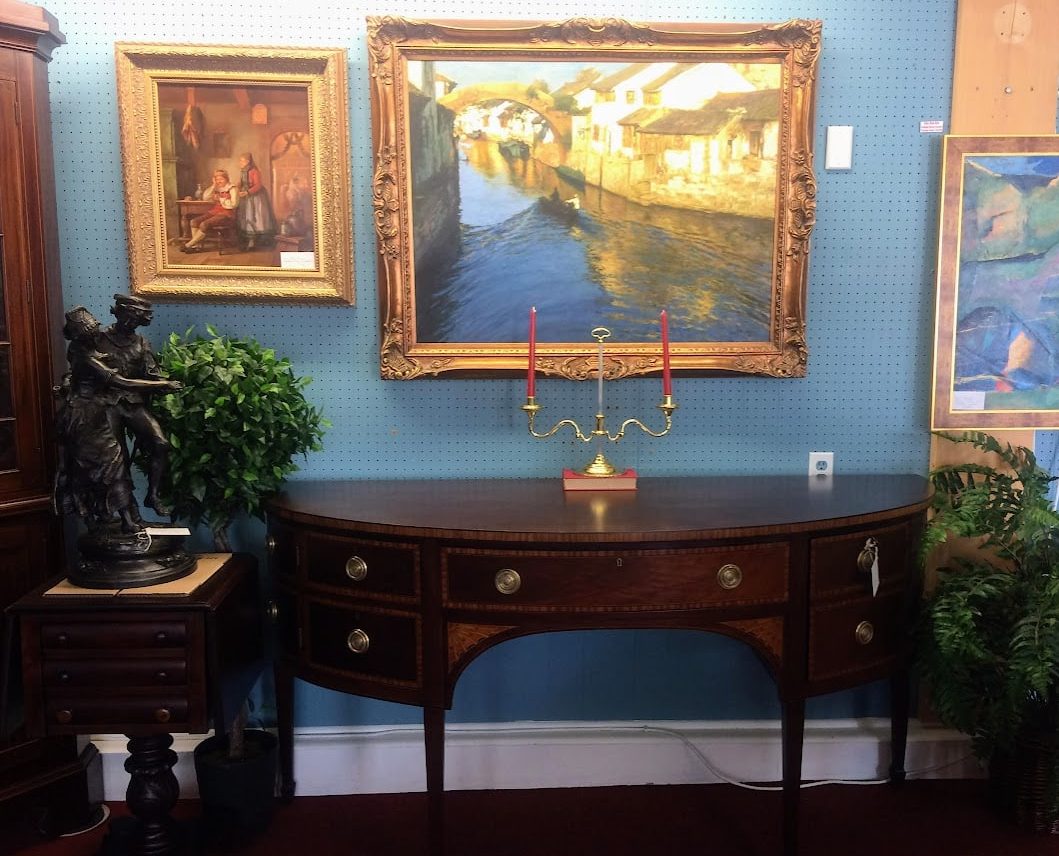
Once upon a time in a small town, there lived an elderly lady named Margaret. She was known throughout the neighborhood for her impeccable taste in interior design and her collection of beautiful antique furniture. Every piece in her home held a story, witnessed history, and possessed a unique charm that had captivated visitors from all walks of life.
One fine day, as I strolled past Margaret’s house on my way to work, I couldn’t help but be drawn to the captivating beauty emanating from her windows. Mesmerized by curiosity, I found myself stepping into her world of timeless elegance. The moment I crossed the threshold, I was transported back in time, surrounded by a treasure trove of antique furniture styles that spanned across centuries.
Antique furniture has an undeniable allure that transcends time and trends. These valuable old pieces have been passed down through generations, carrying with them stories of craftsmanship, history, and cultural significance. Whether inherited or discovered at antique stores and shops, these treasures enhance our spaces with character and sophistication.
As we embark on a journey through the ages, let us explore the evolution of decorative styles in antique furniture and gain insight into how we can embrace these pieces to create stunning interiors.
1. Gothic Revival (15th – 16th century)
Our journey through the annals of time begins during the Gothic Revival era. Inspired by the grand cathedrals of medieval Europe, this style is characterized by intricate carvings, pointed arches, and elaborate tracery. Dark, rich woods such as oak and mahogany were commonly used, creating an air of mystery and opulence.
2. Renaissance (16th – 17th century)
During the Renaissance period, a shift towards classicism occurred, drawing inspiration from ancient Greece and Rome. Furniture of this era featured ornate details, including columns, pediments, and intricate inlays. Oak and walnut were popular choices, while gilding and marquetry techniques added a touch of luxury.
3. Baroque (17th – 18th century)
The Baroque era embraced grandeur and exuberance. Furniture from this time boasted lavish curves, exaggerated details, and indulgent embellishments. Rich materials like walnut, ebony, and gilt accents were used to create stunning pieces that conveyed power and prestige.
4. Rococo (18th century)
As the Baroque era paved the way for the Rococo period, furniture underwent a transformation towards delicate elegance. Characterized by asymmetrical compositions, S-shaped curves, and ornate flourishes, Rococo furniture exuded a sense of whimsy and grace. Lighter woods such as beech and fruitwoods were commonly employed to achieve the desired delicacy.
5. Neoclassical (18th – 19th century)
The Neoclassical period brought a return to simplicity and order inspired by ancient Greece and Rome. Straight lines, geometric forms, and clean silhouettes dominated furniture design. Mahogany became a favored material during this time due to its warm hue and durability.
6. Victorian (19th century)
The Victorian era embraced an eclectic mix of styles, influenced by various cultural movements. From the ornate Gothic Revival to the exoticism of the East with its intricate carvings and inlays, Victorian furniture showcased an abundance of detail. Mahogany remained popular but was often veneered with more exotic woods like rosewood or satinwood.
7. Arts and Crafts (late 19th – early 20th century)
In response to the mass-produced furniture of the Industrial Revolution, the Arts and Crafts movement emerged, valuing handmade craftsmanship. This style celebrated simplicity, natural materials, and clean lines. Oak was frequently used, often left in its natural state or stained in warm earth tones.
8. Art Nouveau (late 19th – early 20th century)
With its sinuous lines and organic motifs inspired by nature, Art Nouveau furniture brought a breath of fresh air to the design world. Curved forms, floral patterns, and the use of exotic materials such as mahogany and macassar ebony created pieces that were both elegant and progressive.
9. Art Deco (1920s – 1930s)
Embracing geometric patterns, sleek lines, and luxurious materials, Art Deco furniture exuded opulence and glamour. Lacquered woods like ebony and bird’s eye maple were popular, accompanied by chrome accents and mirrored surfaces. This style represented a departure from traditional aesthetics and embodied the spirit of the modern age.
10. Mid-Century Modern (1940s – 1960s)
As the world recovered from World War II, an era of optimism and innovation gave birth to Mid-Century Modern design. Emphasizing simplicity, functionality, and organic forms, furniture from this period showcased clean lines and minimal ornamentation. Natural woods like teak and walnut were prevalent, as well as bold pops of color.
Today, antique furniture continues to be highly sought after by collectors and enthusiasts alike. Its timeless appeal lies in the craftsmanship, attention to detail, and unique character that each piece possesses. Antique stores and shops serve as havens for those seeking these rare gems, offering exceptional finds that infuse our spaces with history and charm.
When incorporating antique furniture into your own home decor, there are a few key considerations to keep in mind. First, aim for a harmonious blend between old and new, allowing your antique pieces to take center stage while complementing them with modern accents. Secondly, understand the function and purpose of each piece in order to place it in the most suitable setting. Lastly, don’t be afraid to mix styles and experiment with different periods to create a truly eclectic space.
In conclusion, antique furniture styles provide us with a glimpse into the past, allowing us to appreciate the ingenuity of artisans from different eras. From Gothic Revival to Mid-Century Modern, each period has left its mark on the world of design and continues to inspire us today. Explore antique stores and shops near you, and uncover the best furniture that will add character and sophistication to your home.
